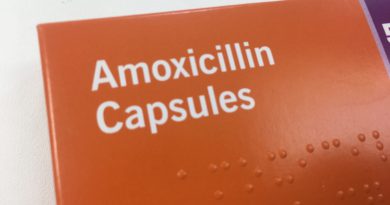Top 10 Most Searched Diseases: #4 HIV – Human Immunodeficiency Virus
HIV is a single stranded RNA virus which has an envelope (lipid membrane). HIV is the causative agent of AIDS, and is a crippling disease around the world with over 35 million people infected. The virus targets CD4 positive cells – the World Health Organisation describes it as a ‘Progressive qualitative and quantitative decline in CD4 positive lymphocytes’. Treatments to remove all the virus from the body have proven very difficult, and as such most treatments focus on maintaining the immune system of the patient and preventing increased viraemia (amount of virus in the blood).
Course of HIV infection

The lower the set point, the longer the asymptomatic phase. Treatments tend to try to extend the asymptomatic phase and successful treatment can now do this for 10 years or more.
Antiviral drugs
Three classes of drugs are FDA licensed:
- Nucleoside analogue reverse transcriptase inhibitors (NRTIs) e.g. AZT, ddC, ddI
- Non-nucleoside reverse transcriptase inhibitors (NNRTIs) e.g. nevirapine
- Protease Inhibitors (PIs) e.g. saquinavir
Often these drugs are used in combination to make the drugs more effective and to reduce the risk of viruses developing resistance to drugs. This combination is known as HAART (Highly active anti-retroviral therapy) and usually includes 3-4 drugs, resulting in a 99% reduction in viraemia in 8 weeks.
NRTIs (AZT, ddC, ddI)
AZT (zidovudine) is an analogue of thymidine. The only difference is instead of the 3’OH group it has an azide group (3 nitrogens). It tricks the polymerase into incorporating it but it is a chain terminating complex so it cannot extend further. This was the first compound to be licensed for the treatment of HIV (FDA license was granted in March 1987). Toxicity was a major issue with this drug despite the fact that it bound to reverse transcriptase with 100-fold greater affinity than to cellular polymerases. Resistance also became a problem with AZT so more NRTIs were developed, ddC (analogue of deoxycytidine) and ddI (analogue of adenosine).
NNRTIs (Efavirenz, Nevirapine, Etravirine, Delaviridine)
These drugs all have very different structures to one another but all bind to the same site on the reverse transcriptase
HIV protease inhibitors (Saquinavir, Nelfinavir)
These target the maturation process in the viral lifecycle – when the virus is released it is non infectious and has a layer of protein rich material on the periphery of the particle. Gag and Gag-pol need to be cleaved by the protease to transform the immature virus particle into an infectious mature version of the virus. This cleavage is inhibited by these HIV protease inhibitor drugs.
HAART is a successful treatment because it helps avoid resistance and is very effective at reducing viraemia and extending the asymptomatic phase, however 3/4 HIV drugs are very expensive, can have many serious side effects, and can have lots of drug-drug interactions.
New more efficient and effective therapies are constantly being developed which target drug resistant HIV strains and are less toxic alternatives to drugs on the market. Little success has been found in eliminating the virus entirely from the body, but if this could be achieved it would help save millions of early deaths caused by AIDS.




